Mysterious Lost City Of The Tairona Hidden In The Jungles Of Colombia
A. Sutherland - AncientPages.com - An unknown ancient city of Buritaca is located in an isolated massif of the Sierra Nevada de Santa Marta, in the northern part of Colombia.
The Tairona Indians built their sophisticated cities on steep mountain ridges, but they did not construct them on their own initiative, according to Cristobal de Molina, the Spanish priest, chronicler, and an outstanding Quechua speaker, who recorded many indigenous, religious beliefs and practices of Inca.

View of the center area of Ciudad Perdida ("Lost City") in north-eastern Colombia. Wanderingstan Own work via wikipedia
However Ecclesiastes 1:4 says that "generations come, and generations go, but the earth lasts forever", and so the remaining paths of Buritaca, its stone roads, turrets, bridges, terraces carved into the mountain side, and countless stairs hidden in a dense jungle of wild greens.
The mysterious 'lost city' - named by the Tairona Indians to 'Buritaca 200' after a nearby river - is covered with dense jungle and occupies a gigantic area consisting of the paved roads and streets.
The area is at least ten times as large as the famous Machu Picchu and is also very reminiscent of it but the only way to reach the place and admire, is either by helicopter or by climbing up some 1,200-1,300 stone steps through dense jungle.
The top platforms of the city are piled one upon another so the only connection with them is through a gigantic maze of stairs.
They are located much higher than the natural roof of the jungle vegetation and cover all steep slopes of the city that was built vertically.
Houses and temples, of which location was matched with the stars, celestial bodies and calendar, stood upon circular stone foundations four to twelve meters in diameter. Exactly 1,200 steps lead up to the terraced temple at the top.
The city with more than six square kilometers linked by ten kilometers of stairways, tracks, 250 artificial terraces and irrigation canals was partially hidden beneath the dense undergrowth. All roads and forest paths were designed in such a way that the locals could always hear visitors approaching.
The whole construction was carefully thought out and meticulously detailed, and whoever the designers of this place were, they were not laymen.
They gave knowledge to the locals and taught stone processing, transport and helped create level fields indispensable for cultivating on steeply graded land.
The Tairona possessed extraordinary powers of working gold, used vegetable juices for the gilding of copper, and applied gold foil to objects made of bone and precious stones. Some of the world’s earliest discoveries have been made in the mountains of Northeastern Colombia and the important gold mining center of Buritaca with its deep roots in prehistory.
See also:
Mysterious Marcahuasi, Peru – One Of The Greatest Puzzles Of Human
PrehistoryInscription On Pokotia Monolith Reveals Sumerians Visited Peru Thousands Of Years Ago
"They work this gold and have the custom of mixing it with copper and silver, and they adulterate it as much as they wish, and so it is of various purities and values," Oviedo (1478-1557), a Spanish historian and writer wrote.
Today, the Kogi and the Sanka Indians - the remnants of the once populous Taironas - still use the stone-paved roads crisscrossing the jungle but they have lost the knowledge on building with stone. Some of these routes lead to cities whose location is a closely guarded secret by the Kogi and other indigenous tribes of the region.
Also, the rich vegetation of Colombia prevents access to this and other mysterious lost cities of South America.
Written by – A. Sutherland - AncientPages.com Senior Staff Writer
Copyright © AncientPages.com All rights reserved. This material may not be published, broadcast, rewritten or redistributed in whole or part without the express written permission of AncientPages.com
More From Ancient Pages
-
 Neanderthal DNA Still Influence Modern Human Genes – Scientists Say
Archaeology | Mar 3, 2017
Neanderthal DNA Still Influence Modern Human Genes – Scientists Say
Archaeology | Mar 3, 2017 -
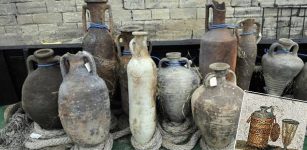 Posca: ‘Wine Of The People’ Was Popular In Ancient Rome And Greece
Ancient History Facts | Sep 26, 2018
Posca: ‘Wine Of The People’ Was Popular In Ancient Rome And Greece
Ancient History Facts | Sep 26, 2018 -
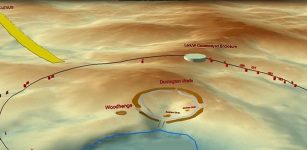 Huge Ring Of Ancient Shafts Discovered Near Stonehenge
Archaeology | Jun 22, 2020
Huge Ring Of Ancient Shafts Discovered Near Stonehenge
Archaeology | Jun 22, 2020 -
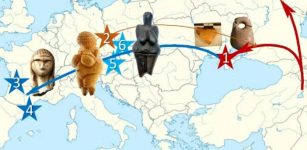 Ancient Skulls From Ukraine Reveal Early Modern Humans Came From The East
Archaeology | Nov 9, 2023
Ancient Skulls From Ukraine Reveal Early Modern Humans Came From The East
Archaeology | Nov 9, 2023 -
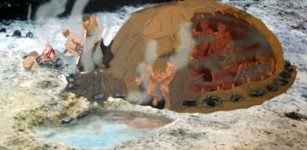 Enigmatic Bronze Age Fulacht Fiadh: ‘Kitchens’ Of The Legendary Irish Warriors
Civilizations | Nov 26, 2018
Enigmatic Bronze Age Fulacht Fiadh: ‘Kitchens’ Of The Legendary Irish Warriors
Civilizations | Nov 26, 2018 -
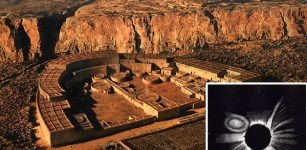 Chaco Canyon’s Piedra del Sol Petroglyph Depicts An Ancient Total Eclipse Visible In The Year 1097
Archaeology | Aug 12, 2017
Chaco Canyon’s Piedra del Sol Petroglyph Depicts An Ancient Total Eclipse Visible In The Year 1097
Archaeology | Aug 12, 2017 -
 Susanoo-no-Mikoto – Shinto God Of The Sea And Storms Was Banished From Heaven
Featured Stories | Nov 23, 2018
Susanoo-no-Mikoto – Shinto God Of The Sea And Storms Was Banished From Heaven
Featured Stories | Nov 23, 2018 -
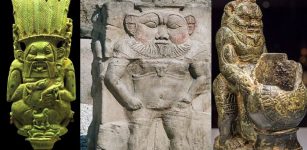 Bes – Ancient Egyptian Dwarf God Of Childbirth, Humor, Song and Dance
Egyptian Mythology | Sep 9, 2016
Bes – Ancient Egyptian Dwarf God Of Childbirth, Humor, Song and Dance
Egyptian Mythology | Sep 9, 2016 -
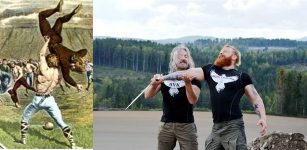 Glima – Ancient Martial Art Practiced By The Vikings Is Still Popular Today
Ancient Traditions And Customs | Mar 7, 2017
Glima – Ancient Martial Art Practiced By The Vikings Is Still Popular Today
Ancient Traditions And Customs | Mar 7, 2017 -
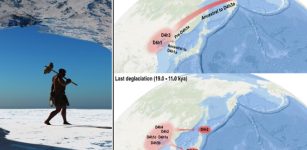 DNA Evidence Ice Age Humans Migrated From China To The Americas And Japan
DNA | May 9, 2023
DNA Evidence Ice Age Humans Migrated From China To The Americas And Japan
DNA | May 9, 2023 -
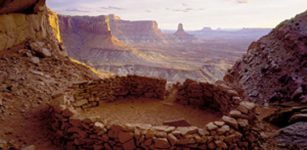 Native American Tradition Of A Vision Quest – How To Enter The Spiritual World
Ancient History Facts | Apr 25, 2017
Native American Tradition Of A Vision Quest – How To Enter The Spiritual World
Ancient History Facts | Apr 25, 2017 -
 Mary Boleyn – King Henry VIII’s Other Woman And Sister Of Anne Boleyn
Featured Stories | Jul 24, 2018
Mary Boleyn – King Henry VIII’s Other Woman And Sister Of Anne Boleyn
Featured Stories | Jul 24, 2018 -
 On This Day In History: Admiral John Byng Charged With ‘Failing To Do His Utmost’ – Executed – On Mar 14, 1757
News | Mar 14, 2017
On This Day In History: Admiral John Byng Charged With ‘Failing To Do His Utmost’ – Executed – On Mar 14, 1757
News | Mar 14, 2017 -
 Mysterious Disappearance Of Explorer Peng Jiamu In Lop Nur – The Wandering Lake
Featured Stories | Dec 20, 2018
Mysterious Disappearance Of Explorer Peng Jiamu In Lop Nur – The Wandering Lake
Featured Stories | Dec 20, 2018 -
 Humans Carry DNA From An Ancient, Unidentified Ancestor – Scientists Say
DNA | Apr 13, 2023
Humans Carry DNA From An Ancient, Unidentified Ancestor – Scientists Say
DNA | Apr 13, 2023 -
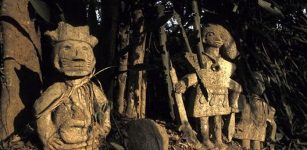 Mystery Of Sacred Groves Of Oshogbo And Its Remarkable Ancient Figures
Featured Stories | Nov 25, 2023
Mystery Of Sacred Groves Of Oshogbo And Its Remarkable Ancient Figures
Featured Stories | Nov 25, 2023 -
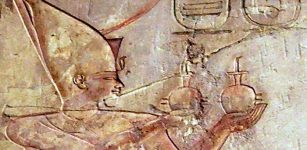 Newly Unearthed Colossal Statue Probably Depicts King Psammetich I And Not Ramses II
Archaeology | Mar 17, 2017
Newly Unearthed Colossal Statue Probably Depicts King Psammetich I And Not Ramses II
Archaeology | Mar 17, 2017 -
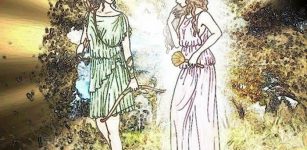 Ancient Greek Goddesses Aphrodite And Artemis – Rivalry And Conflict Over Prestige Illustrated In Hippolytus By Euripides
Featured Stories | Jun 13, 2018
Ancient Greek Goddesses Aphrodite And Artemis – Rivalry And Conflict Over Prestige Illustrated In Hippolytus By Euripides
Featured Stories | Jun 13, 2018 -
 On This Day In History: Captain James Cook Spotted The East Coast Of Australia – On Apr 19, 1770
News | Apr 19, 2017
On This Day In History: Captain James Cook Spotted The East Coast Of Australia – On Apr 19, 1770
News | Apr 19, 2017 -
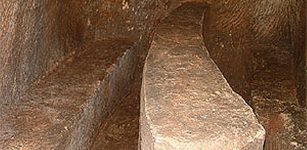 Mystery Of Gilmerton Cove: Underground Maze Of Caves, Passages And Tunnels
Featured Stories | Dec 22, 2015
Mystery Of Gilmerton Cove: Underground Maze Of Caves, Passages And Tunnels
Featured Stories | Dec 22, 2015


